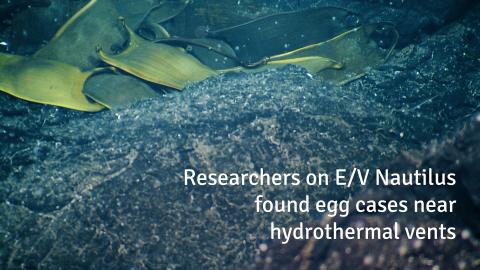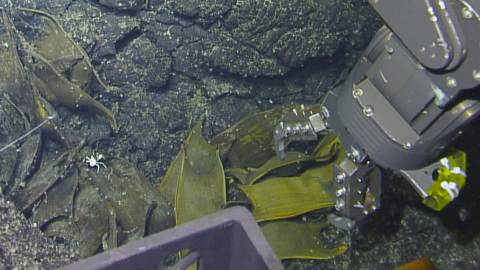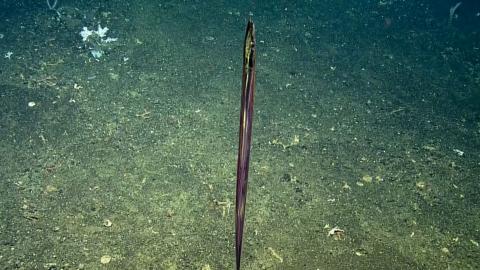Lights in the Dark: New Tools in the Search for Bioluminescence
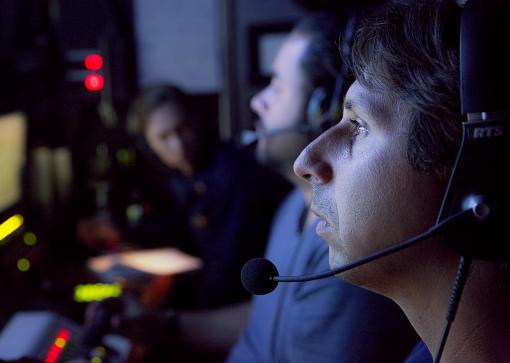
By Science Communication Fellow Ariel Zych - @arieloquent
Blackness, complete consuming blackness greeted the viewers of Nautilus Live for a time during the Galapagos Expedition in June and July of 2015. The lights on ROVs Hercules and Argus were turned off, and members of the corps of exploration searched the ocean with a new tool: a low light camera capable of detecting small amounts of bioluminescence. After sending two brief and very bright flashes into the darkness, one of these exploratory filming sessions returned this exciting footage of bioluminescence in a Tomopterid polychaete worm:
Though ROVs Hercules and Argus both have multiple cameras aboard, they are not sensitive enough to detect the ocean's dimmest light sources. “I’m interested in looking at everything, and this camera is the truest way that we can measure low light in the ocean,” said ROV pilot and URI PhD candidate Brennan Phillips. You may also recognize Brennan from his recent "sharkcano" discovery. Working in collaboration with Vincent Pieribone at the J.B. Pierce Laboratory at Yale University, Phillips has adapted the camera for use with ROVs in hopes of exploring the deep ocean for new, unique examples of bioluminescent organisms.
Bioluminescence is light created and emitted by living organisms. The light emitted by bioluminescent organisms is created by a controlled chemical reaction involving a special molecule called Luciferin that results in the emission of photons. Though bioluminescent organisms can be easily observed at the surface of the ocean in many regions and have been documented at depths of over 2500m, much less is known about the diversity of bioluminescent organisms and the intensities and wavelengths of light they produce.
In order to capture bioluminescence in the deep ocean, Phillips records a movie without light stimulation by turning off all of the ROV lights and filming. Next, members of the ROV team coordinate a two-flash sequence using lights on ROV Hercules to stimulate bioluminescent organisms, and Phillips records a second video of equal length. The video without stimulation is “subtracted” from the footage with luminescence using MatLab software to remove background noise and improve contrast. Further enhancements can help to identify the type of organism that is luminescing and how the luminescence travels within the body of the organism. Processing the raw footage into quantitative and visually clear results takes time, and the so the findings are still preliminary.
By exploring different regions of the world’s oceans for bioluminescence, Pieribone and Phillips hope to find examples of bioluminescence at different wavelengths and intensities for future biomedical applications. One example of this type of application is green fluorescent protein, used for visualizing gene expression in living tissues. Originally isolated from the jellyfish Aequorea victoria, the protein is so widely used for visualizing gene expression that it earned its discoverer a Nobel Prize in 2014.
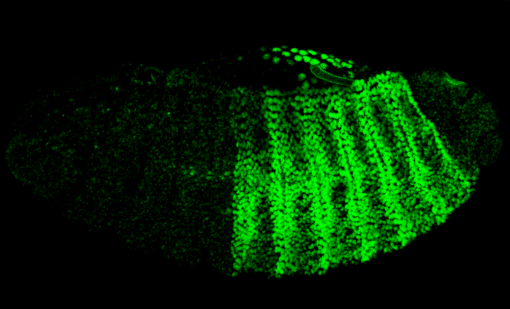
Identifying a broader range of fluorescent proteins is the next step for advancing the field of gene expression visualization. “The longer the wavelength, the deeper in tissue it can be visualized. Finding new frequencies of bioluminescence will allow researchers to visualize deeper tissues,” says Phillips. “If we can find fluorescent proteins that have longer wavelengths we could create non-invasive embeddable imaging tools – we could create signaling proteins deep within a person.”
The first step in finding new frequencies of bioluminescence is to search diverse ocean habitats for bioluminescent organisms and measure the wavelengths of light they are producing. Phillips has already taken the camera on three different cruises looking for new bioluminescent organisms, including New England and the Solomon Islands.
The vents near the Galapagos piqued his interest because vent bacteria had been previously shown to have genetic sequences that code for luminescing protein. The question is, do they actually produce light? After a few dives, Phillips is still unsure, though a single bright dot observed at a smoker was encouraging. “I’m not trying to collect the animals, I’m more interested in demonstrating that the camera can accurately measure levels of light,” Phillips said. “I was actually hoping to pair light measurement from the actual vent with bioluminescent animals that might actually be there. I think I might have to get up closer. I’m still figuring out the right way to do this.” Phillips said.
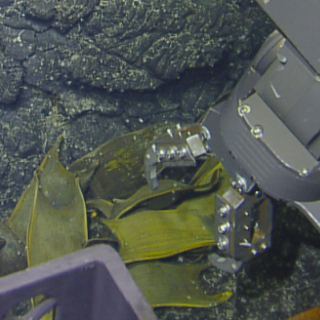
Galapagos Platform
The E/V Nautilus will spend several weeks exploring the Galapagos Rift region. The Galápagos Islands have been instrumental in the establishment of the biological theory of evolution, gaining insights to our knowledge of the chemistry of the Earth’s interior, and understanding the plate tectonic evolution of the eastern Pacific seafloor.
